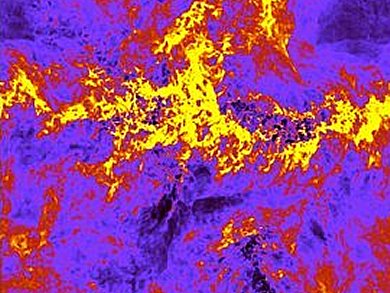Turbulent flows are very common, for example, when we mix milk and coffee or in the gasoline/air mixture in combustion engines. They play a major role in the dynamics of physical processes.
The Russian mathematician Andrey Kolmogorov developed during the Second World War a phenomenological theory for turbulence using simple geometrical and energetic arguments. Kolmogorov’s predictions have been validated in a number of conditions, but a fundamental mathematical theory of turbulence is still lacking. As a result, the “Analysis of the existence and regularity of solutions to the three-dimensional incompressible Navier-Stokes equations” is on the list of unsolved mathematical problems, for which the Clay Mathematics Institute in Cambridge/Massachusetts offered prize money to the tune of one million US dollars in the year 2000 for its solution.
David Radice and Luciano Rezzolla, Max Planck Institute for Gravitational Physics (Albert Einstein Institute; AEI), Potsdam, Germany, developed a new computer code which has provided relativistic calculations that give a better understanding of turbulent processes in regimes that can be found in astrophysical phenomena.
They researched turbulence in relativistic conditions of speed and energies, such as those expected near a black hole or in the early universe. In both cases, the fluid motion is close to the speed of light. A virtual laboratory was used to simulate these situations taking relativistic effects into account. The corresponding nonlinear differential equations of relativistic hydrodynamics were solved on the supercomputers at AEI and the Garching-based Computing Centre.
These calculations have not solved the problem, but are demonstrating by observing anomalies and new effects that the previous theory has to be modified and how this should be done.
Image © David Radice/Luciano Rezzolla (AEI)
- Max Plank Gesellschaft, Munich, Germany
- Universality and Intermittency in Relativistic Turbulent Flows of a Hot Plasma,
D. Radice, L. Rezzolla,
Astrophys. J. Let. 2013, 766:L10.
DOI: 10.1088/2041-8205/766/1/L10



How can we solve the problem of hydrogen into the air to ignite the flame safely and without being absorbed and turns off explosively risk